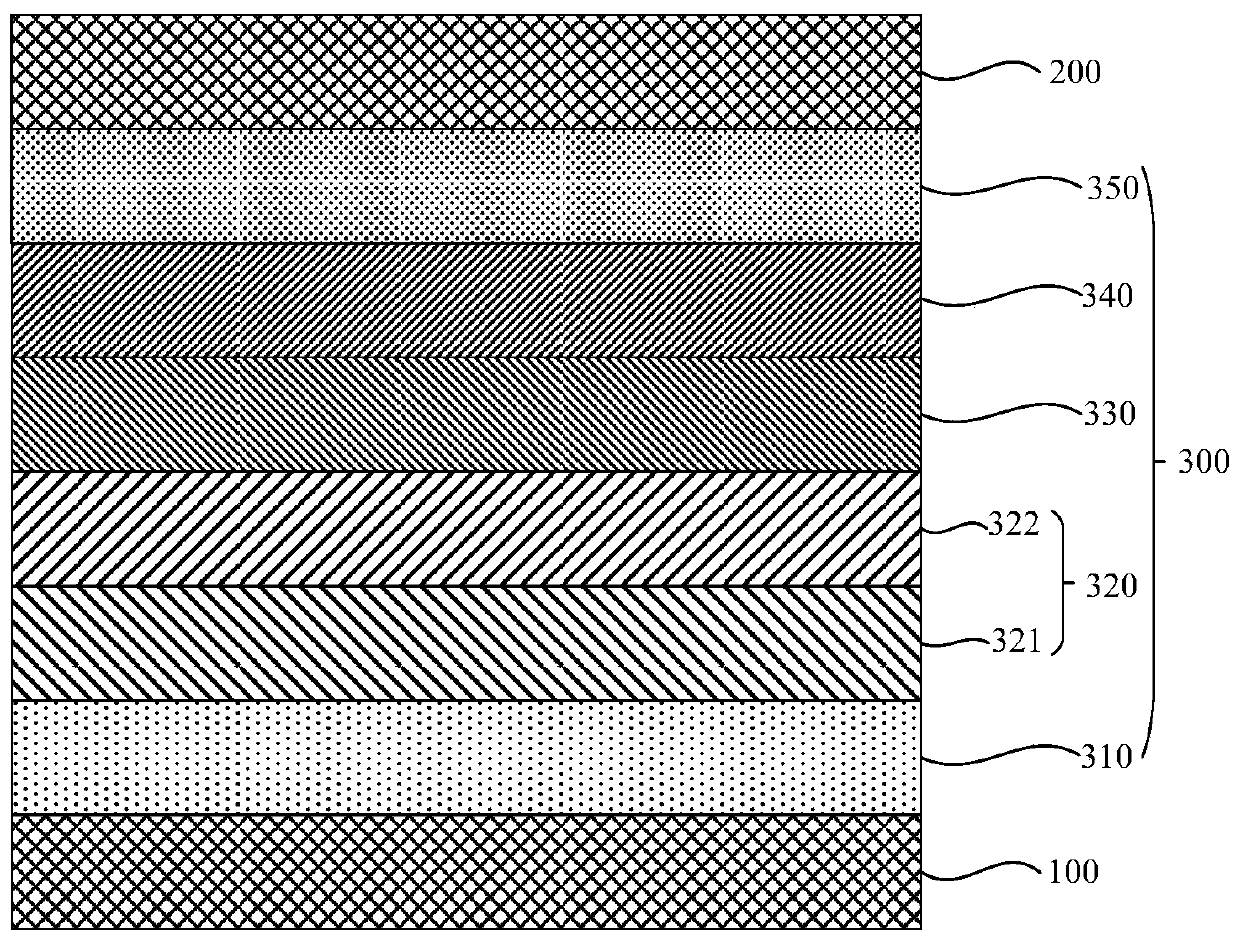Organic compound, electronic device, and electronic apparatus
An organic compound and chemical formula technology, applied in the field of organic compounds, can solve the problems of high driving voltage, low luminous efficiency, poor thermal stability, etc., and achieve the effects of low voltage, excellent hole transport performance, and high luminous efficiency
- Summary
- Abstract
- Description
- Claims
- Application Information
AI Technical Summary
Problems solved by technology
Method used
Image
Examples
Embodiment 1
[0236] Organic electroluminescent devices using compound 1 as hole transport layer (HTL) material
[0237] Organic electroluminescent devices were prepared by the following process:
[0238] Set the ITO thickness to The ITO substrate (manufactured by Corning) was cut into a size of 40mm (length) × 40mm (width) × 0.7mm (thickness), and then it was prepared into an experiment with anode, cathode bonding area and insulating layer by photolithography process. Substrate (light-emitting pixel point size is 3mm×3mm), using ultraviolet ozone and O 2 :N 2Plasma surface treatment was performed to increase the work function of the anode (experimental substrate) and to remove scum.
[0239] 10 nm of HAT-CN (CAS No.: 105598-27-4) was evaporated as a hole injection layer (HIL) on the anode.
[0240] Next, a layer of Compound 1 of the present invention was vapor-deposited with a thickness of 100 nm to form a hole transport layer (HTL).
[0241] TCTA (CAS No.: 139092-78-7) was vacuum-ev...
Embodiment 2~15
[0248] In the above device structure, in addition to replacing the compound 1 of the hole transport layer (HTL) with compounds 2, 3, 4, 5, 6, 7, 17, 21, 41, 49, 61, 87, 100, 122, implement Examples 2-15 used the same method as Example 1 to prepare organic electroluminescent devices.
PUM
| Property | Measurement | Unit |
|---|---|---|
| thickness | aaaaa | aaaaa |
| thickness | aaaaa | aaaaa |
Abstract
Description
Claims
Application Information
 Login to View More
Login to View More - R&D
- Intellectual Property
- Life Sciences
- Materials
- Tech Scout
- Unparalleled Data Quality
- Higher Quality Content
- 60% Fewer Hallucinations
Browse by: Latest US Patents, China's latest patents, Technical Efficacy Thesaurus, Application Domain, Technology Topic, Popular Technical Reports.
© 2025 PatSnap. All rights reserved.Legal|Privacy policy|Modern Slavery Act Transparency Statement|Sitemap|About US| Contact US: help@patsnap.com



